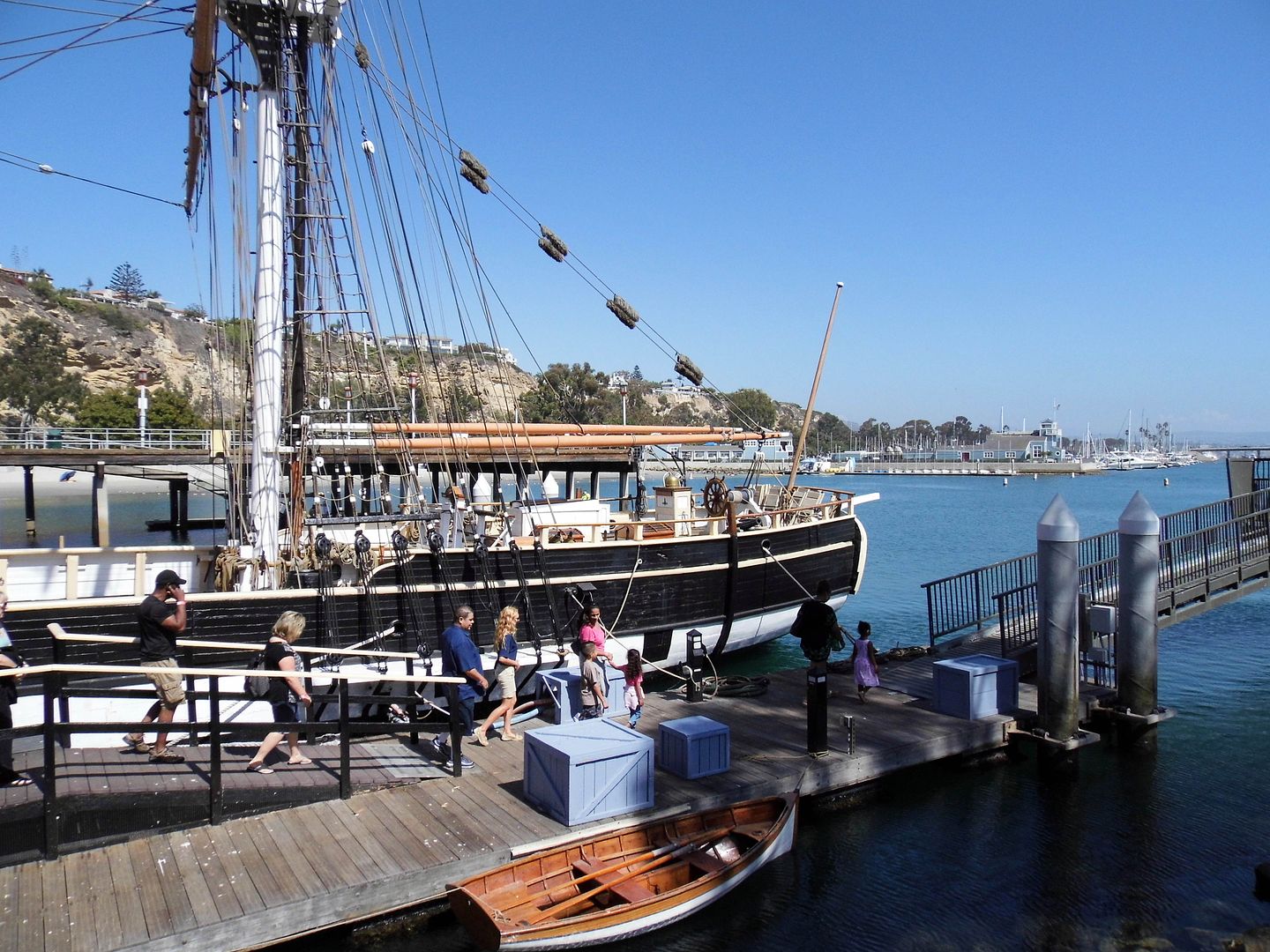[Last updated 8/10/23 11:19 AM PT—Video embed added at bottom.]
[Updated 3/30/20 10:22 PM PT—info on the sinking of the Pilgrim added]In the 19th century, before the Oak of the Golden Dream and the first gold strike that led to an influx of would-be prospectors, there wasn't much reason for East Coasters to come out West.
It was wild, savage, and inhospitable. To those from more "civilized" regions, it might've felt downright prehistoric.
But in 1835, Harvard student Richard Henry Dana, Jr. caught the measles, was put on leave, and set sail on a brig-type tall ship called the Pilgrim.
After rounding the tip of South America (this was 80 years before the Panama Canal opened), Dana found himself at San Juan Cove, in the southernmost part of what's now Orange County—and at the time, the only safe anchorage between Santa Barbara and San Diego.

Photo from 2018, added 2020
[Ed: Tragically, the replica of the Pilgrim—built in 1945 and permanently moored in Dana Point Harbor at the Ocean Institute since 1981—began taking on water on March 29, 2020 and, mostly sunken, was deemed incapacitated beyond repair.]
It was just three or four miles from the Mission San Juan Capistrano, where cowhides were tanned to be brought to the cliffs above the beach, in an area known as The Lantern District.
Entrepreneurial types set up camp here—and when ships would come in, they'd light up their color-coded lanterns to advertise whatever wares they had available for trade. (The motif persists today, though the trade does not.)
The most famous of those were the sailors who chucked the cowhides from the mission off the cliffs, to be retrieved by the Yankee merchant seamen standing below. The hides were California's most valuable currency, with one hide—or "buck," for short—valued at approximately one gold dollar. Bostonians would use them, for example, to fabricate leather shoes.
Though Dana deemed the area "romantic" and remarked at its grandeur, he didn't stick around and instead returned to Harvard and became a maritime attorney. But his impact on San Juan Cove was lasting, thanks to his memoir of his sea voyage and tales of "hide-droghing," as published in 1840 in Two Years Before the Mast.
Once people read about the ragged shoreline and staggering cliffs, of course they wanted to conquer them—not the least of whom were Ned Doheny the oil fortune heir (murdered in 1929 and the namesake of Doheny State Beach) and Sidney H. Woodruff of Hollywood Sign fame.
As real estate developments were booming in the environs north of San Juan Cove in the 1920s, Woodruff tried to make a go of it with the Dana Point Inn.
The Hollywoodland developer envisioned capturing the romance and adventure of Two Years Before the Mast to attract tourists and homebuyers alike to his burgeoning resort community.
He planned a grand hotel like what you'd find in the Mediterranean—and in 1930, he broke ground.
But the stock market back east had crashed in 1929. And although the Depression was slow to reach the West Coast, it was enough to halt construction of the half-completed Inn in 1931.
Its ruins stood atop the bluff for decades, though all that's left now a bit of the old rock-lined walkways...
...and a set of stone arches, which mark the former hotel site like a tombstone.
Down the cliff, not far from where the Pilgrim first docked and where its replica is moored today, there's one more remnant of the Dana Point Inn.
A 165-foot shaft had been tunneled out of the bluff to make the beach easily accessible to hotel guests—by elevator.
Its boarded-up entrance serves as a final point of historical interest for the Dana Point Inn, though there's no mechanism or working parts inside.
In the time since Woodruff lost everything in 1939 (and died in 1961), San Juan Cove has become far less rugged and far more refined, incorporating in 1989 and officially changing its name to Dana Point (though the name had been coined years before).
A jetty was built, using granite excavated from Catalina Island, calming the waters enough for two yacht clubs to move in but driving the surfers away.
Now, the rock wall provides habitat for cormorants and Western gulls...
...crabs and an underwater kelp forest...
...and brown pelicans and sea lions.
So, maybe that means that some of the development is managing to keep Dana Point Harbor wild. And that seems like a good thing.
Watch the video I produced for KCET's "SoCal Wanderer" in the player above.

No comments:
Post a Comment